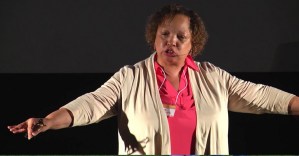By Stacy M. Brown, NNPA Newswire Senior National Correspondent,
@StacyBrownMedia
Vernice Miller-Travis has consistently recognized racism, including how race has played a significant role in environmental policy.
She’s the vice chair of Clean Water Action’s board of directors, executive vice president for environmental and social justice at Metropolitan Group, and co-founder of We Act for Environmental Justice.
Miller-Travis said that it’s her job to analyze data from the U.S. Environmental Protection Agency’s list of national priorities.
In that way, she’s able to keep abreast of hazardous waste sites in the United States, including the ones that pose an immediate health and environmental threat.
“You get to see the pattern,” Miller-Travis told National Newspaper Publishers Association (NNPA) President and CEO Dr. Benjamin F. Chavis Jr.
“The pattern around the racial composition of who lives in a particular place in proximity to a hazardous waste site is not random,” she said during a riveting conversation inside NNPA’s state-of-the-art television studios in Washington.
The full discussion will air on Chavis’ PBS-TV Show, The Chavis Chronicles.
And when there’s any pushback, Miller-Travis stands at the ready.
“When they ask whether they’re being accused of being racist, I tell them that what I’m saying is that your policies you utilize have an unequal impact that people of color are always adversely affected, not white people.”
Born in 1959 at New York’s Harlem Hospital, where both her parents worked, Miller-Travis said she spent a lot of time at the famed health center.
She attended Barnard College before earning a political science degree from Columbia University’s School of General Studies.
“I started as a researcher working for the civil rights division of a small Protestant Church known as United Church of Christ – the remnants of the church established by the pilgrims,” Miller-Travis said.
As she spoke with National Newspaper Publishers Association President and CEO Dr. Benjamin F. Chavis Jr., for a segment of his PBS-TV show, The Chavis Chronicles, they shared stories about the 40th anniversary of the Warren County, North Carolina protest that officially birthed the movement.
“One of the people leading that struggle was a minister in the United Church of Christ, and he called up to the headquarters in New York City and said, look, we need help. Nobody has talked to us, and the state has not reached out. There have been no briefings, no hearings, no nothing,” Miller-Travis recalled.
“And so, the national church did all they could to help and bring attention to it, but they thought, this is kind of curious.”
She continued:
“We need to see if what’s happening in Warren County is endemic to what’s happening in rural North Carolina – is it the southeast? Is it bigger than that? And they hired me as a research assistant to help identify what we would then call environmental injustice and environmental racism, which Dr. Chavis coined the term.”
“And we found that race was the most statistically significant indicator of where hazardous waste sites were located across these United States, not just North Carolina.”
Miller-Travis said her grandmother encouraged her to use her “practical knowledge” as a scientist to understand the circumstances affecting predominately Black communities.
“Nobody was researching the lived experience in terms of environmental impacts on communities of color, on low-income communities, on tribal communities,” Miller-Travis recalled.
“People were focused on endangered species, endangered water bodies – that was where the environmental community’s head was. They were working on hazardous waste issues, but no one was connecting race and environmental threats’ location. So, we were the first folks to do this.”
She continued:
“We published a report in 1987 called ‘Toxic Waste and Race in the United States,’ published by the United Church of Christ’s Commission for Racial Justice, which set the whole conversation aloft in this country.
Miller-Travis later traveled to Washington, where the First National People of Color Environmental Leadership Summit took place.
She said she realized then that environmental racism existed throughout the United States.
Miller-Travis helped to adopt the 17 Principles of Environmental Justice, which remains relevant as the world wrestles with climate change, global warming, and a woeful environment.
However, she said she’s optimistic because the Biden-Harris administration has proven aggressive in its approach to these issues.
“This has been the most aggressive White House administration to address environmental injustice and environmental inequities in the history of the United States of America,” Miller-Travis asserted.
“They have policies, objectives, staff, executive orders specifically about environmental injustice in the climate space, and an executive order on addressing systemic racism across the breadth of the federal government.”
Help us Continue to tell OUR Story and join the AFRO family as a member – subscribers are now members! Join here!
The post NNPA BLACKPRESSVernice Miller-Travis, a Crusader who Continues the Struggle to Weed out Environmental Racism appeared first on AFRO American Newspapers .










